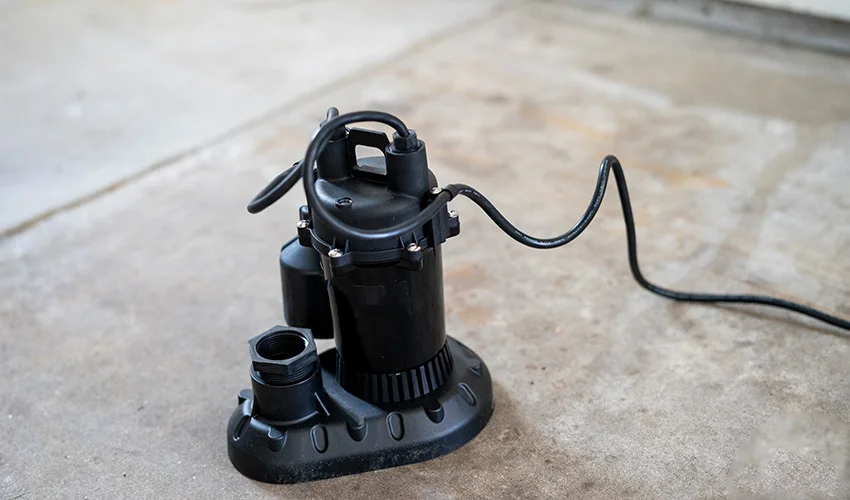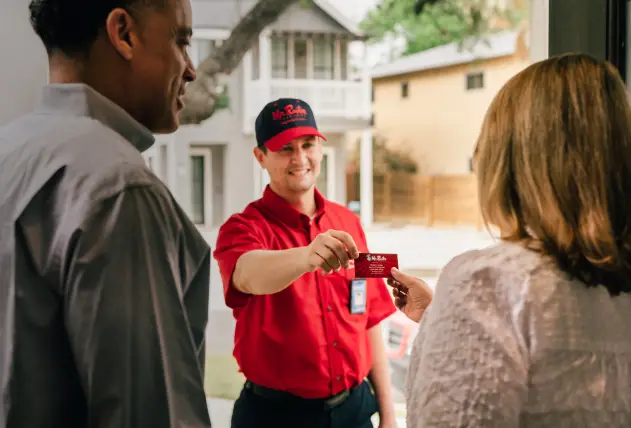
Summary:
- A backup sump pump is essential for preventing flooding in homes with basements or lower levels by providing an extra layer of protection if the primary sump pump fails.
- Primary sump pumps remove water to keep a home dry, but backup sump pumps are necessary to handle failures, power outages, or heavy rain, ensuring continuous protection.
- Without a backup sump pump, homes are at risk of water damage due to pump malfunctions, power outages, or other issues, leading to potential flooding.
- There are two types of backup sump pumps: battery-powered, which can move large amounts of water and operate during power outages, and water-powered, which uses municipal water pressure and has unlimited runtime.
- Installation involves cleaning the primary pump, adding a check valve, connecting the backup pump with discharge pipes, setting up a marine battery, and ensuring proper electrical connections, ideally done by a professional plumber.
Want to learn how to install a backup sump pump? If your home’s lower level has a tendency to accumulate water, getting a backup sump pump installed is a good idea. It’s designed to prevent water from overflowing a sump pump pit or flooding your basement if the primary pump malfunctions.
A backup sump pump provides that extra layer of protection to avoid a flood disaster and the need for water damage restoration services. Read on to learn what a sump pump and backup sump pump are, and how backup sump pump installation protects against flooding in your home. Plus, we’ll walk you through the basic steps of backup sump pump installation.
What Is a Sump Pump and Backup Sump Pump?
A primary sump pump keeps water out and away from your home. It sits in a basin that collects natural groundwater or rain that comes into the vicinity and then pumps the water away to keep your home’s foundation and lower level dry. Not all homes have sump pumps, but if your home has an underground level like a basement, crawlspace, or cellar, a sump pump can provide priceless peace of mind.
A backup sump pump is essentially a “plan B” for your sump pump. If the primary pump fails, the backup sump pump springs into action, keeping the water away and preventing disaster. Plus, if you experience heavy rains or flooding in your area, the backup pump will take care of the excess water and moisture the primary pump can’t handle.
What Can Happen Without a Backup Sump Pump?
What are the risks of not having a backup sump pump? Flooding. Water damage. A giant mess. A primary sump pump can fail or malfunction due to a power outage (common during heavy storms), a tripped circuit breaker, a blown fuse, and a host of other potential problems. When it fails, your home’s lower level is exposed to all of the water the sump pump would have normally pumped away.
By installing a water-powered or battery backup sump pump, you will enjoy peace of mind knowing you have an extra layer of protection against flooding and water damage. A backup sump pump will continue to run, even during a power outage, because backup pumps don’t rely on the home’s electrical supply.
The Two Types of Backup Sump Pumps
If you’re considering installing a sump pump as a backup to your primary pump, there are two different types to consider:
Battery-powered: The most popular type of backup sump pump, a battery backup sump pump features a marine deep-cycle battery. Some battery-powered backup sump pumps can move up to 2,000 gallons of water per hour.
Water-powered: A water-powered backup sump pump empties a sump pit by running water through a pipe at high speed to generate sufficient suction. Because it operates based on water pressure, not a battery, it has unlimited running time—as long as water is available. This type of pump is especially helpful if you have multi-day power outages in your area. It removes two gallons of water for every one gallon of municipal water it uses. It can be a worthwhile alternative to a battery backup for a sump pump.
Steps for Battery-Powered Backup Sump Pump Installation
A water-powered device connects to your home’s water supply and requires a professional plumber to install. Some homeowners attempt to install their own battery-powered backup pump, but we always recommend contacting your local plumber for this job.
Here’s how a plumber installs sump pumps:
- Before starting the installation is a great time to clean the primary sump pump.
- Next, the plumber will install a check valve on the primary sump pump, which will prevent water from flowing back into the sump pit.
- The plumber will then cover the threads on the check valve with Teflon tape and tighten the check valve onto the side of the new backup sump pump. Tightening the pump onto the check valve will keep the device secure.
- Next, the plumber will carefully set the battery backup sump pump into the sump pit.
- Then the plumber will cut a PVC pipe to form the discharge pipe—typically, the size will be a 1½-inch diameter pipe.
- Your plumber will glue the PVC pipe to the pump fittings and connect it to the existing discharge pipe using a rubber connector and stainless steel hose clamps.
- Choose a nearby shelf for the plumber to place the deep-cycle marine battery, inside a protective plastic box.
- The plumber will form the low-voltage connections for the cable between the battery and the backup sump pump.
- Last, your plumber will plug the battery into the appropriate voltage electrical outlet to charge.
Professional Backup Sump Pump Installation
Would you like to have a licensed plumber take care of installing a sump pump for you? The team at your local Mr. Rooter Plumbing® is ready to help. We install battery-powered and water-powered sump pumps at homes and businesses alike. Call us today or request an estimate online.
Are you facing a water-damage disaster after your sump pump failed? Our friends at Rainbow International know everything about water damage restoration. They’re in the Neighbourly® family of home service brands, so you can trust them to deliver outstanding results.

